Nowadays, axolotls are getting more popular as pets due to reliable information about their food and habits.
As a beginner axolotl owner planning to raise axolotl babies hatching and you may be wondering how to care for them.
Axolotls can lay eggs several times per year in their natural environment. The eggs will then hatch between 14-20 days based on the temperature in their tank.
Baby axolotls usually grow very fast during their early stages, requiring special care to grow properly.
This article provides a complete guide on how to care for baby axolotl hatching, from how to determine that an axolotl egg is about to hatch to axolotl baby-related concerns.
Contents
How to Know When Axolotl Eggs Are About to Hatch
Female axolotls usually lay eggs between 12-72 hours after fertilization occurs. They can lay about 1000 eggs, and you can separate the parents as they can eat the eggs.
It will take around 2-3 weeks for axolotl eggs to hatch into larvae.
However, you can determine that an axolotl egg is about to hatch if you see them twitch and turn in the eggs.
You can also look at the egg closely, and you will notice that their little gills are developing.
Also read: How To Identify Dead Axolotl Eggs?
Axolotl Babies Hatching: Complete Guide
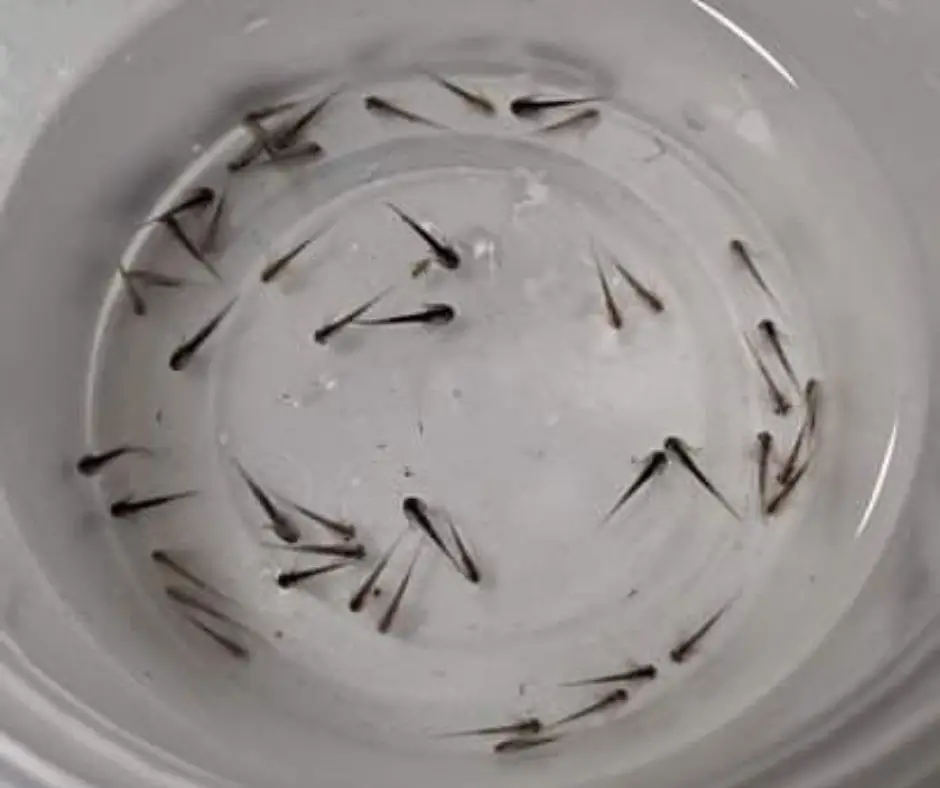
The best thing to do is to create an ideal living condition suitable for healthy larvae development after noticing that the eggs are about to hatch.
This is important for your baby axolotls to help ensure that they grow very well.
Axolotl babies hatching are called larvae, and they vary in size from 10-13mm. Axolotl babies are usually motionless after hatching and don’t need food.
This is because they absorb the egg yolk found in their bellies for 2-3 days after hatching. You can then feed them with small live foods like daphnia, white micro worms, etc.
As stated below, you will need to prepare an ideal house for your axolotl. You can keep about 200 axolotl hatchlings in a 20-gallon tank.
After a couple of days, you will need to separate the hatchlings into smaller communities to help ensure they grow well.
Note: Axolotls will develop their front legs about 2-3 weeks and their hind legs around 4-6 weeks after hatching.
They will also develop their lungs around the time they are developing their hind legs. However, the development of their front and hind legs depends on the temperature in the enclosure and their diet.
PENN-PLAX Quick-Net Aquarium Fish Nets
- ESSENTIAL TOOL FOR FISHKEEPING: It’s always good to have an extra fish net for your aquarium! In addition to cleaning up some extra fish food that was accidentally poured, it becomes a handy tool when you need to quickly handle fish, and transfer them between tanks. They’re safe to use with both freshwater and saltwater fish, and come in various sizes!
- DURABLE, STRONG, AND SAFE: Each fish net features a vinyl covered, two-part braided handle that provides for an ergonomic grip, ensuring reliable operation with its strong design. Our aquarium fish nets won’t bend or become distorted over time, even with repetitive use. The mesh netting is appropriate for almost any type of aquarium fish, both freshwater and saltwater.
- MEASUREMENTS: The QN4 model of our Quick-Net line features a 4” x 3” net, with a handle length of 10”
- COLOR MAY VARY: Please be advised that our fish nets come in various shades of blue and green. We will ship based on availability. But rest assured, your fish won’t mind the difference in color, as long as they’re safely transported.
- SHOP PENN-PLAX FOR ALL YOUR PET’S NEEDS: PENN-PLAX is a manufacturer and distributor of top quality pet supplies, who specialize in creating excellent pet products for animals, both great and small.
Last update on 2022-12-29 / Affiliate links / Images from Amazon Product Advertising API
Before Axolotl Grow Legs
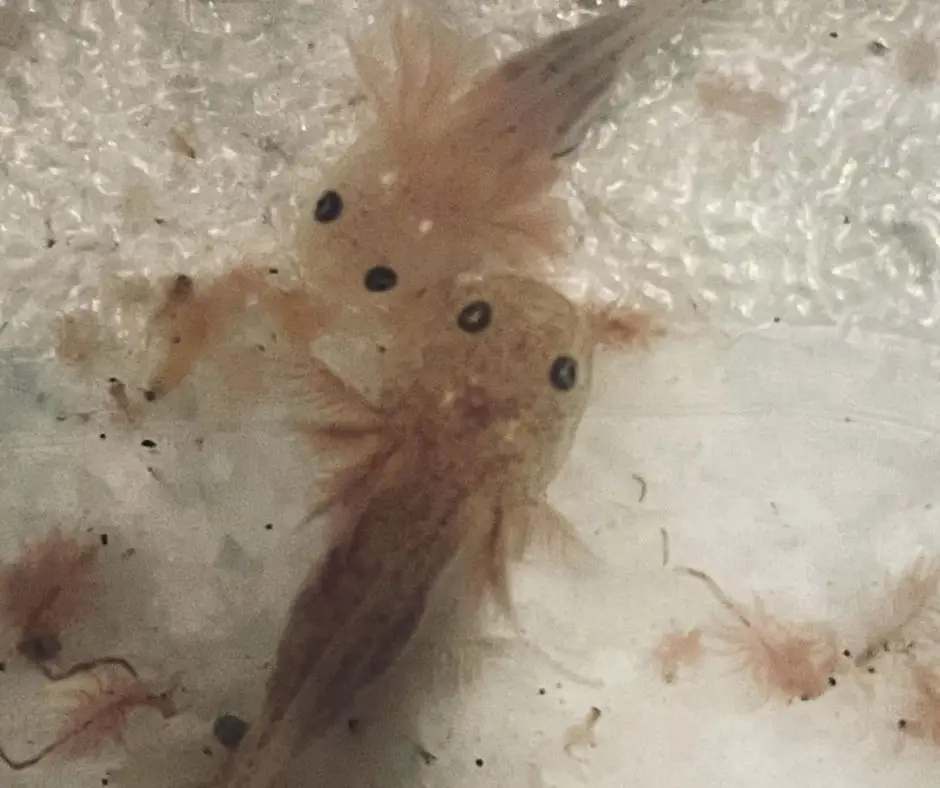
The growth rate of the axolotl is usually different from one species to another due to several factors.
However, before your axolotls start to grow legs, you can start to prepare the tank for them to help ensure they get adequate care.
You can keep all the hatchlings together in the same tank during this period. During this stage, the axolotl hatchling is usually about 20mm in length.
It is important that you only feed them with live food items that are very small.
Some of the live foods you can feed them are daphnia, brine shrimp, micro worms, and chopped blackworms.
However, many hobbyists recommend that you feed them with brine shrimp 1-2 times every day, as much as they can eat, to give them a round tummy.
You can culture your brine shrimp at home to help ensure it is safe for your baby axolotls.
Apart from food, you will also need to vacuum waste from your baby axolotl tank regularly to help keep the water quality at optimal range.
You will also need to do 25-50% water changes every other day.
After Axolotl Grow Front Legs
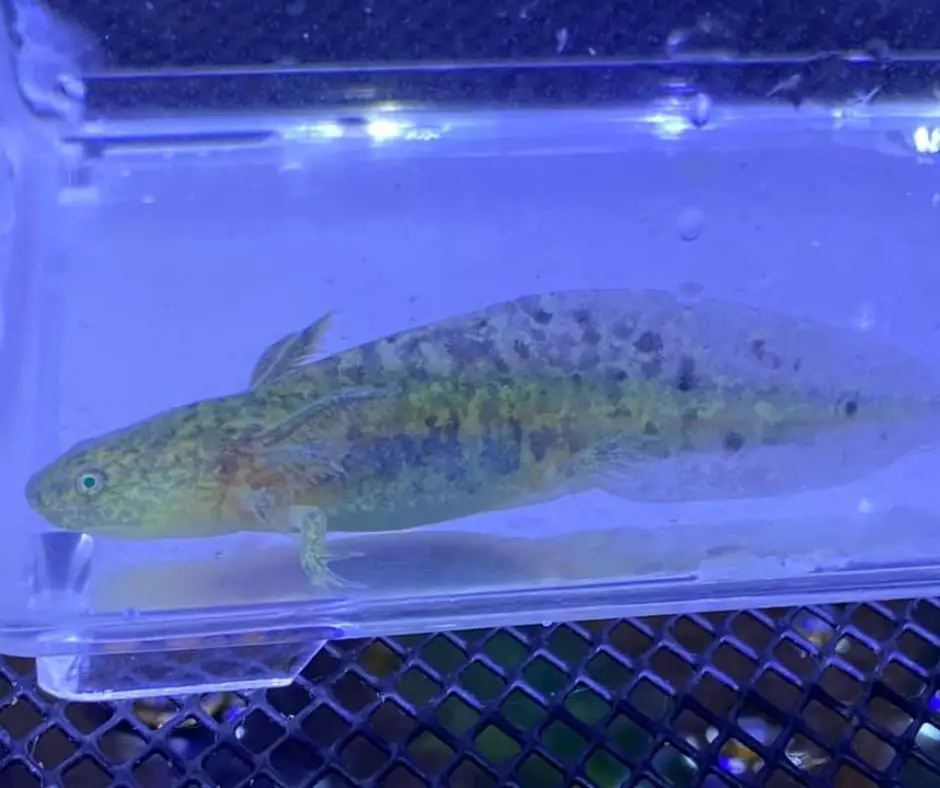
Axolotls will develop their front legs around 2-3 weeks after hatching. They usually start to grow their front legs after getting to 20 mm long.
As always, it is important that you monitor the water quality in their tank during this stage.
You will need to remove waste from your axolotl tank with an eyedropper or turkey baster.
You will need to separate axolotl larva during this period, and this will help to ensure your axolotl can grow well and don’t feed on their younger siblings.
You can divide them based on their sizes and house them in different tanks. You can keep two axolotls in a 55-gallon tank.
The rest, you can sell to breeders. If you have a large pond, nothing can prevent you from keeping a lot of them.
At this period, you can also feed your axolotl hatchling with thawed frozen bloodworm coupled with live foods.
You can feed them at least twice every day to help ensure your baby axolotls do not eat each other when hungry.
After Axolotl Grow Back Legs
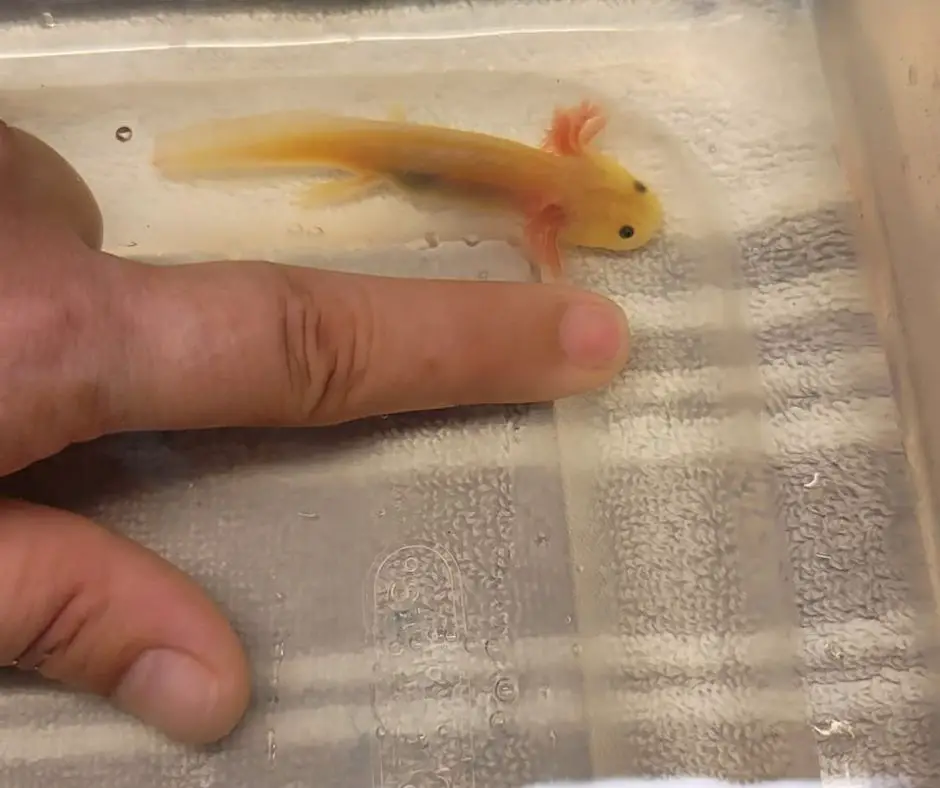
Baby axolotls will start to develop their hind legs between 4-6 weeks after they hatch. It is also during this period that they develop their lungs.
Like the other stages, you will need to regularly monitor their water quality.
Baby axolotls can eat chopped-up blackworms after they have developed their hind legs. You will then need to thin out your axolotl larvae as they grow.
You can euthanize or cull any deformed or inferior larvae (those that cannot easily regrow their gills and limbs).
You can start caring for your axolotl hatchlings like a baby axolotl after fully developed hind legs.
Axolotl Babies Hatching and Related Concerns
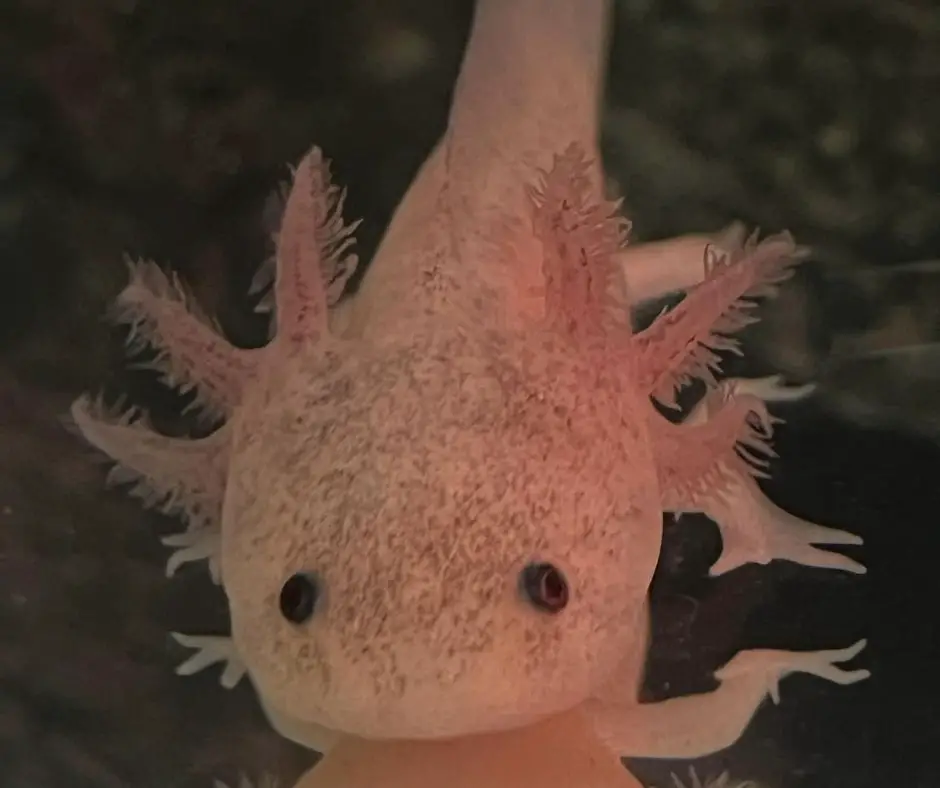
Lifecycle of an axolotl:
Axolotls have a long lifespan if you can give them good care and ensure their water parameter is at an ideal level. Axolotls have five stages of development, from the egg stage to when they are fully adult.
The hatching of an axolotl egg is the second stage in their developmental life cycle. As stated before, axolotl hatchlings are usually covered in jelly to help protect them.
They are usually about 2mm after hatching and will develop to about 11 mm before they get to the third stage of development.
Growth rate of an axolotl:
The axolotl hatching stage is usually very fast as this can last between a few days and weeks.
It can take about a year before an axolotl can reach its final stage of development and stay in this stage for the rest of their lives.
The growth rate and the size of an axolotl usually differ from one species to another.
Some of the things that can affect the growth rate of an axolotl are:
- Genetic
- Age
- Habitat
- Feeding Schedule
Aqueon Aquarium 20 Gallon Long
- High quality glass construction with dimensions 30.25" x 12.5" x 12.75"
- For freshwater and marine applications
- Clean silicone edges (select sizes available in clear or black)
- Always include a drip loop when plugging aquarium appliances into the electrical outlet
- Place aquarium on stand able to safely bear the weight of a filled aquarium
Last update on 2022-12-29 / Affiliate links / Images from Amazon Product Advertising API
Wrapping Up
Baby axolotls are usually considered hatchlings from hatching until they are about 20mm.
They have a fast growth rate during the hatchling stage as this can take about 2 weeks. However, it is important to care for your axolotl hatchling during this period to help ensure they grow very well.
They require an ideal environment and an adequate diet to stay healthy.


